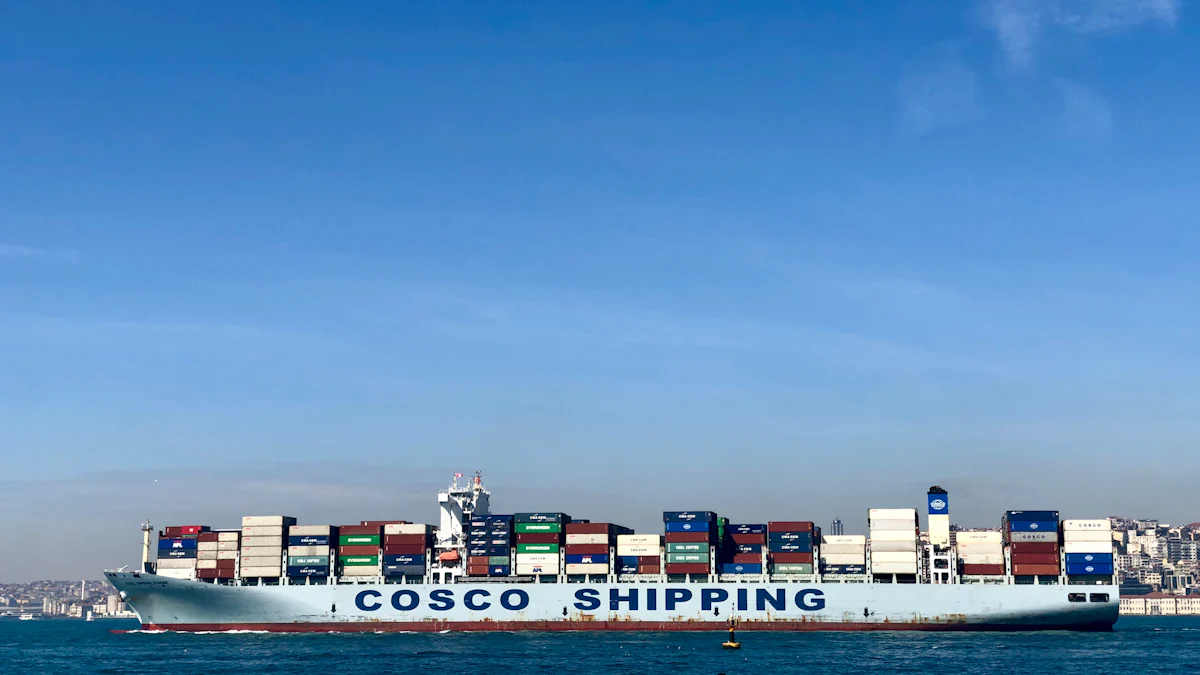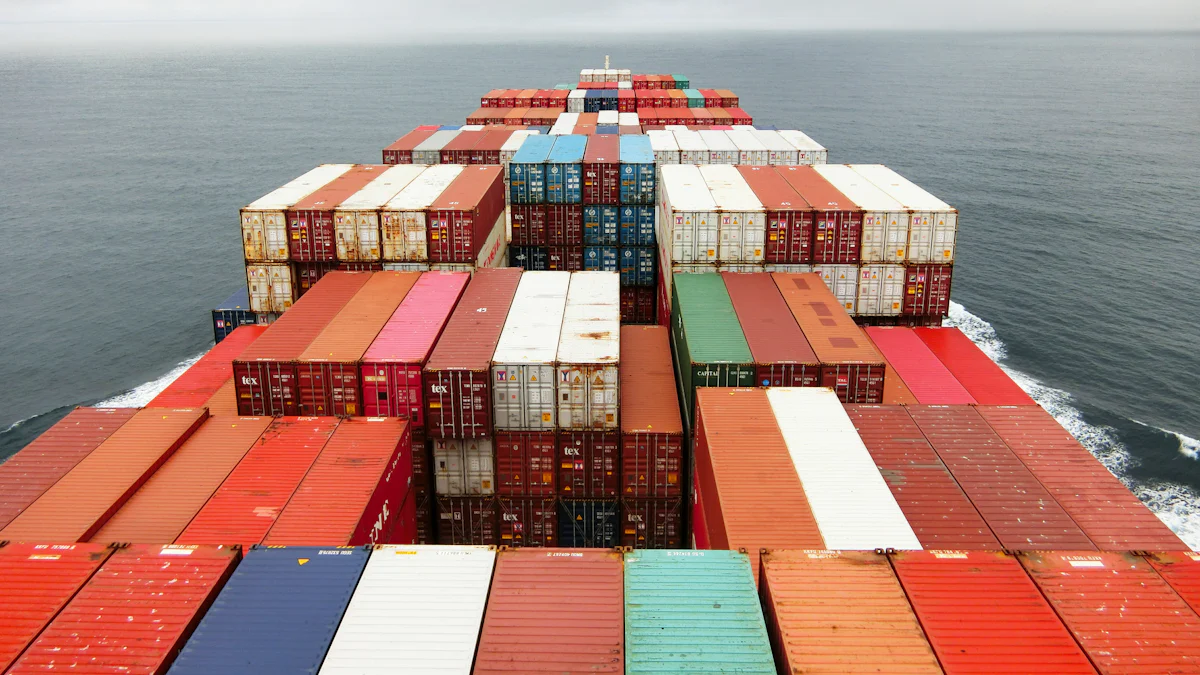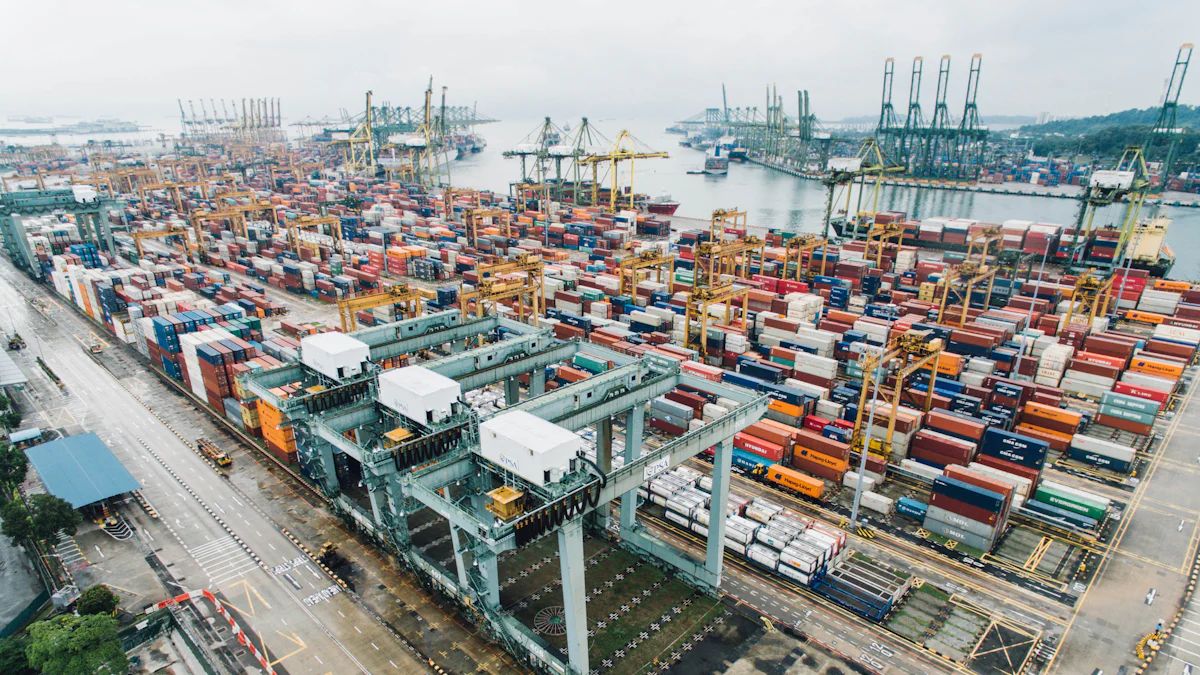How to Optimize Freight Transport from China to India

Optimizing freight transport is essential for boosting the efficiency of supply chains. By focusing on freight transport optimization, businesses can realize substantial cost savings and enhance delivery times. Effective route planning and load optimization help reduce empty runs, resulting in more sustainable operations. Companies such as DHL Freight leverage digital tools for intelligent route planning to cut down on unnecessary trips. These strategies not only decrease operational costs but also promote environmental sustainability. Through optimized freight transport solutions, businesses gain increased competitiveness and improved customer satisfaction.
Modes of Freight Transport

Freight transport between China and India involves choosing the most suitable mode of transportation. Each mode offers unique benefits and limitations, impacting cost, speed, and efficiency.
Sea Freight
Sea freight remains a popular choice for transporting goods over long distances. This mode provides several advantages:
Advantages of Sea Freight
Cost-Effectiveness: Sea freight offers a cost-effective solution for large volumes of cargo. The ability to transport large quantities at once reduces the overall shipping cost.
Capacity: Ships can carry large or abnormally shaped goods. This makes sea freight ideal for businesses dealing with bulk shipments.
Versatility: Sea freight accommodates various types of cargo, including non-perishable goods. This flexibility suits different business needs.
Disadvantages of Sea Freight
Slower Transit Times: Sea freight generally requires more time compared to other modes. Businesses must plan for longer delivery schedules.
Weather Dependency: Shipping routes can face delays due to adverse weather conditions. This unpredictability affects delivery timelines.
Limited Speed: Sea freight lacks the speed required for urgent shipments. Businesses needing quick delivery may find this mode unsuitable.
Air Freight
Air freight offers an alternative for businesses prioritizing speed and security. This mode of transport presents distinct advantages and disadvantages:
Advantages of Air Freight
Speed: Air freight provides rapid transit times, making it the fastest option for shipping goods. This speed benefits time-sensitive shipments.
Security: Air freight offers enhanced security measures. Goods remain less vulnerable to theft or damage during transit.
Suitable for High-Value Goods: Air freight caters to small-volume, high-value goods. Businesses transporting expensive items benefit from this mode.
Disadvantages of Air Freight
Higher Costs: Air freight incurs higher costs compared to sea freight. Businesses must weigh the benefits of speed against the increased expense.
Limited Capacity: Aircraft have limited cargo space. This restricts the volume of goods that can be transported in a single shipment.
Environmental Impact: Air freight contributes to higher carbon emissions. Businesses concerned with sustainability may consider this factor.
Strategies for Optimization
Choosing the Right Shipping Mode
Selecting the appropriate shipping mode is crucial for optimizing freight transport. Different cargo types require different handling and transportation methods.
Based on Cargo Type
Cargo type influences the choice of shipping mode. Perishable goods demand faster transit times. Air freight suits these shipments. Non-perishable goods can utilize sea freight due to its cost-effectiveness. Businesses must assess the nature of their products to determine the optimal mode.
Based on Volume
Volume plays a significant role in shipping decisions. Large volumes benefit from sea freight. This mode provides ample space and reduces costs per unit. Smaller shipments may find air freight advantageous. The speed compensates for higher costs. Businesses should evaluate shipment sizes to make informed choices.
Understanding Transit Times
Transit times impact delivery schedules and customer satisfaction. Various factors influence these times.
Factors Affecting Transit Times
Several elements affect transit times. Weather conditions can delay shipments. Port congestion also contributes to extended durations. Efficient route planning mitigates these issues. Companies must consider these factors when scheduling deliveries.
How to Minimize Delays
Minimizing delays enhances freight transport efficiency. Digital tools aid in route optimization. Companies like DHL Freight use such technologies. These tools streamline operations and reduce unnecessary trips. Businesses should invest in technology to improve transit reliability.
Considering Cost-Effectiveness
Cost-effectiveness remains a priority in freight transport. Balancing expenses with efficiency ensures optimal operations.
Cost Comparison of Different Modes
Different modes present varying costs. Sea freight generally offers lower rates for bulk shipments. Air freight incurs higher expenses due to speed. Businesses must compare these costs against their needs. A thorough analysis aids in making cost-effective decisions.
Balancing Cost and Efficiency
Balancing cost and efficiency is vital for success. Companies must weigh the benefits of each mode. The UK manufacturer of baked goods improved logistics efficiency through supply chain modernization. Coca-Cola HBC optimized product flows, reducing movement costs. These examples highlight the importance of strategic planning. Businesses should adopt similar approaches for better outcomes.
Impact of Trade Policy Changes
Trade policy changes play a crucial role in shaping the dynamics of freight transport between China and India. Recent updates in trade regulations have brought significant shifts in shipping routes and operational strategies.
Recent Changes in Trade Policies
Recent modifications in trade policies have influenced the logistics landscape. New regulations on carbon emissions for ships are set to take effect in January 2024. These regulations aim to reduce the carbon footprint of maritime transport, promoting eco-friendly practices. The shipping industry must adapt to these changes to comply with environmental standards.
Effects on Shipping Routes
Changes in trade policies have caused adjustments in shipping routes. The end of competition exemptions for shipping lines in the EU has altered global trade patterns. Shipping companies now face increased competition, leading to a reevaluation of existing routes. Businesses must stay informed about these developments to optimize their shipping strategies.
Adjusting to Policy Changes
Businesses need to adapt quickly to policy changes to maintain efficiency. Monitoring trade policy updates helps companies navigate the evolving trade environment. Understanding the implications of these changes allows businesses to adjust shipping routes and operational plans effectively. Companies can leverage digital tools to streamline processes and enhance adaptability.
Role of Intermodal Freight Transport

Intermodal freight transport plays a significant role in optimizing the movement of goods between China and India. This approach combines multiple transportation modes, such as rail, road, and sea, to move cargo efficiently. Intermodal transport leverages the strengths of each mode, resulting in improved logistics performance.
Enhancing Efficiency
Intermodal transport enhances efficiency by integrating various transport modes. This integration allows for seamless transitions between different stages of the journey. Efficient coordination reduces transit times and minimizes delays. Businesses benefit from streamlined operations and increased reliability.
Benefits of Intermodal Transport
Intermodal transport offers several benefits that contribute to its effectiveness:
Cost Savings: Intermodal transport reduces costs by utilizing the most economical mode for each segment of the journey. Businesses can lower expenses by optimizing routes and minimizing empty runs.
Flexibility: Intermodal transport provides flexibility in handling diverse cargo types. The system accommodates various goods, including bulk shipments and smaller consignments.
Environmental Impact: Intermodal transport promotes sustainability by reducing carbon emissions. The use of rail and sea transport decreases reliance on road transport, resulting in a smaller environmental footprint.
Implementing Intermodal Solutions
Implementing intermodal solutions requires strategic planning and investment in infrastructure. Businesses must establish efficient connections between different transport modes. Coordination with logistics providers ensures smooth transitions and timely deliveries. Companies should invest in technology to enhance tracking and monitoring capabilities. Digital tools provide real-time visibility into the movement of goods, improving decision-making and operational efficiency.
Freight transport optimization between China and India offers numerous advantages. Businesses can achieve significant cost savings and improved delivery times. Companies should focus on selecting the appropriate shipping mode based on cargo type and volume. Understanding transit times and minimizing delays enhance efficiency. Cost-effectiveness remains crucial for maintaining competitiveness. Implementing intermodal solutions provides flexibility and sustainability. Companies like ICP Group have successfully used digital tools to make data-driven decisions. Businesses should consider these strategies to optimize their freight operations.
See Also
Optimizing Supply Chain Costs: The Economic Perspective
Success Assured: Top Methods for Optimizing the Supply Chain
Unveiling 5 Innovative Techniques for Optimizing the Supply Chain
Sustainable Transportation in Supply Chains: The Definitive Guide
Tomorrow's Logistics Revolution: The Impact of AI on Supply Chains
